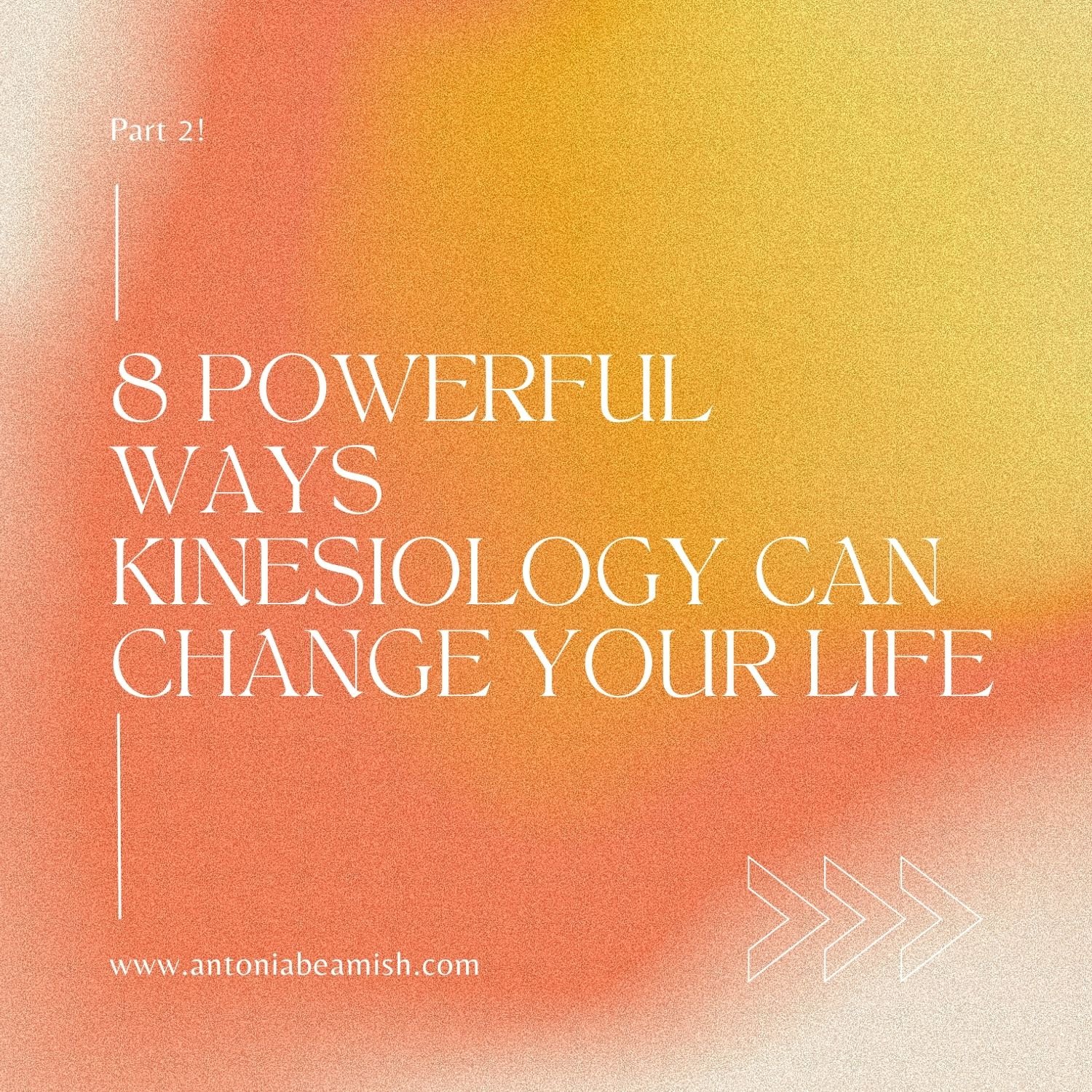What is Systematic Kinesiology?
Most people I come across have never heard of Kinesiology. In a nutshell, Kinesiology is a holistic therapy that works with the physical, emotional and energetic body to uncover the root cause of your symptoms and facilitate healing.
Kinesiology changed my life and I continue to see wonderful results with the clients I work with. For this reason, I wanted to write a post explaining this amazing therapy in more depth.
What’s different about Kinesiology?
One of the reasons Kinesiology is less well known is that it doesn’t fit into a specific bracket of healing. When you have structural pain, you think of visiting a physiotherapist or an osteopath. Perhaps, if you need help with subconscious patterning or emotional issues, you might see an NLP practitioner or therapist. Similarly, if you want to work on gut issues you’d probably book in with a nutritionist.
Kinesiology is unique in that it works across the four different levels of your wellbeing - the chemical, the structural, the emotional and the energetic, to uncover and treat the root cause of your symptoms.
Systematic Kinesiology was born out of the chiropractic development of Applied Kinesiology and what makes it unique is its embodiment of MCPE; the principle that addresses and balances the four aspects of the whole person; Mental, Chemical, Physical and Energetic, simultaneously.
Using this approach, we rebalance the energies that flow through the intervertebral foramina using touch, massage, nutrition and stress release, with immediate benefits. No other form of natural healthcare practices this approach, which is what makes Systematic Kinesiology so powerful.
Kinesiology uncovers the root cause of symptoms
Symptoms are a sign that there’s an underlying imbalance which the body wants you to pay attention to.
We have a saying “where it is, it isn’t” because often the root of the problem is in a completely different area where you’re experiencing the symptoms, which can make it difficult to know how to treat. This is why we use muscle testing to try and understand what the body is telling us.
Systematic Kinesiology takes away the guesswork, allowing us to get to the root cause (which can often be emotional), wherever it may be hidden, so the body can return to homeostasis.
Practitioners act like translators between you and your body. Using muscle testing we find and correct any imbalances using a range of techniques including nutritional therapy using natural supplements, lymphatic massage, emotional work and energetic balancing.
Where does Kinesiology come from?
Kinesiology originates from ‘Chiropractic’ a system concerned with the diagnosis and treatment of mechanical disorders of the musculoskeletal system that cause health problems.
When stressed, areas of the spine can get out of proper alignment which chiropractors call ‘subluxations’. These conditions are resolved using manipulation of the spine which rectify the ‘subluxations’ and improve overall health.
In 1964, Dr. George Goodheart, D.C., a renowned American chiropractor, discovered a way of working with the body. By strengthening certain muscles, he could relieve common ailments. He called this revolutionary new principle ‘Applied Kinesiology’.
As he began to research the correlation between the lymphatic system, the muscles, and Chapman's reflexes, he also discovered how energy flow, from Traditional Chinese Medicine, had a significant impact on muscle response. This breakthrough was astounding as never before had Chinese energy medicine been integrated with our physical understanding of anatomy and physiology.
What is muscle testing and how does it work?
The brain is in command of the whole body via the spinal cord. Between each vertebra of the neck, the thorax and the lumbar area are holes called the intervertebral foramina (IVF).
Kinesiology uses muscle testing, developed by physical therapists Florence and Henry Kendall in 1949, to tap into the body's energies and biochemical function electrically through these 7 factors of the intervertebral foramina.
Neuro Vascular system
Acupuncture meridian connectors
Cerebral Spinal Fluid
Emotional reflex (stress has a physical effect)
Nutritional reflex (diet related issues and deficiencies)
While the first 4 are widely known by doctors, the last 2 factors are now beginning to be acknowledged. One area which is heavily researched within the field of emotional reflex is psychoneuroimmunology, the study of the interaction between the mind, the nervous system, and immune system.
While doctors use electrical equipment to ‘read’ patients, we are reading this electrical energy in a different and more subtle way.
A great example of how Kinesiology works
This is one of my favourite ways to explain what Kinesiology can do.
Three men in a bar have lower back pain. One goes to see a physiotherapist and he comes out feeling great because his lower back pain has disappeared. He tells his two friends who book in immediately. The second man has his session and comes out feeling better temporarily but his lower back pain quickly returns. The third man goes in and his lower back pain doesn’t change. Why is this?
The first man had lower back pain with a structural root cause so the physiotherapist was able to make improvements.
The second man had lower back pain but the root cause was a issue with his digestive system that was pulling on the lower back muscles. Therefore, he didn’t feel any long-lasting pain relief as his nutritional deficiencies and needs weren’t addressed.
The third man was going through a divorce and the root cause of his lower back pain was from a lack of emotional support, which switched the muscles off supporting his back, therefore a physical therapy didn’t make any difference when it wasn’t addressing his emotional needs.
Want to receive the latest blog posts straight to your inbox? Sign up for my newsletter and you’ll also receive your FREE ‘Discover Your Fear Saboteur’ guide, the ultimate guide to identifying the fear sabotaging your potential!


















